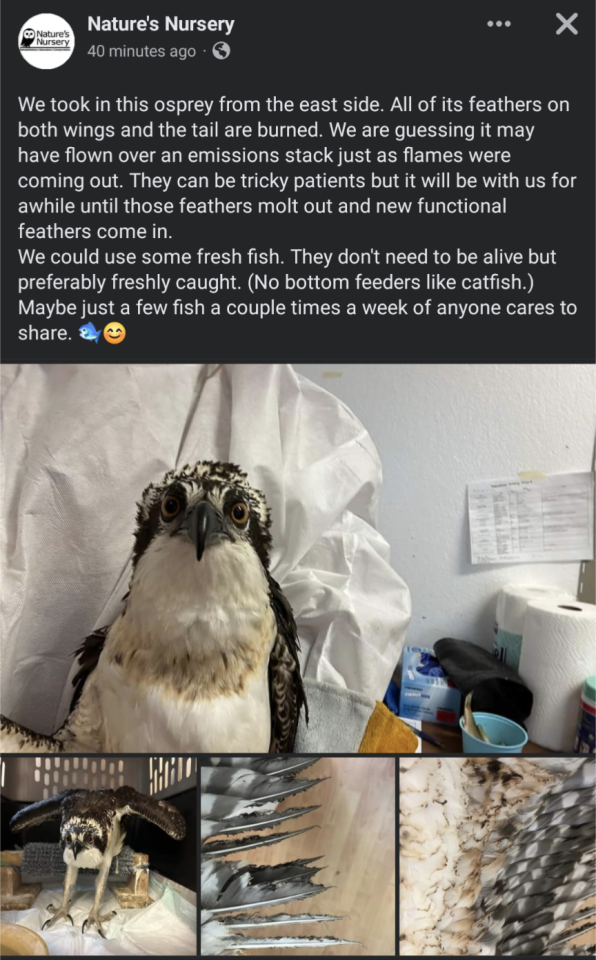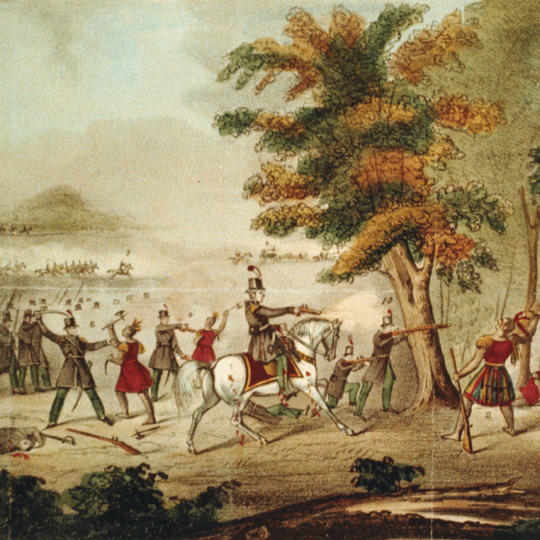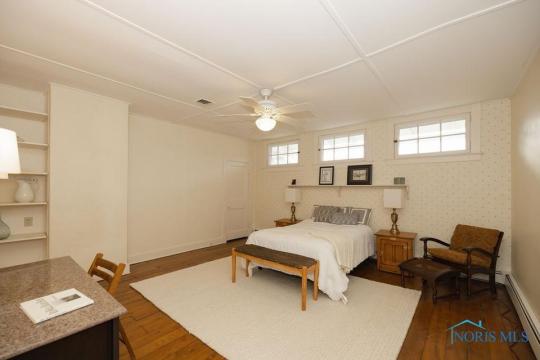#maumee river
Explore tagged Tumblr posts
Text
I'm back from the Fitzgerald Experience at the National Museum of the Great Lakes! It was an interesting experience for sure, with so many connections to local history within living memory. I had no idea that the Fitz was called the "Toledo Express," among other nicknames. The Canadian-born Captain Ernest M. McSorley was living in the Toledo area, as were many of his crew.


Museum ship Colonel James M. Schoonmaker is 600-something feet long, with a 65-foot beam, vs. the Edmund Fitzgerald's length of 729 feet with a 75-foot beam. They are fairly similar Lake freighters in terms of construction and size. The tour highlighted parts of the ship implicated in the sinking of the Edmund Fitzgerald, and oral history collected from Great Lakes mariners.
There was also a copy of the lyrics of Gordon Lightfoot's song "The Wreck of the Edmund Fitzgerald" in the galley, with words highlighted in red that don't match the known history e.g. saying that the Fitz was headed for Cleveland, when she was destined for Zug Island. Lightfoot was close to the families of the crew, and he actually changed lyrics on request and would perform the song differently in concert, although this isn't reflected in popular recordings.
A salty (sea-going freighter) was traveling down the Maumee River during the tour, to great excitement all around.

The museum guide mentioned that all the salties look like this: rusted and decrepit after 10+ years of sea-going service, when a laker wouldn't look like that after 50 years. Built in 1911, Colonel James M. Schoonmaker was actively in use until an economic downturn in 1980.
#the wreck of the edmund fitzgerald#great lakes#maritime history#freighter#maumee river#toledo#ohio#lake erie#museum ship#gordon lightfoot#they put down new grit paint on the schoonmaker's decks THANK GOD#that ship was a death trap when wet last spring#and as thematically appropriate as that might be i'm glad it was fixed#national museum of the great lakes#edmund fitzgerald#shaun talks
47 notes
·
View notes
Text



Today's walk🖤
#witchcore#witchblr#witchcraft#naturecore#walking in nature#nature worship#nature worker#Farnsworth metropark#ohio#november#Maumee River
4 notes
·
View notes
Text

Industry and Art
Seen in Toledo, Ohio.
6 notes
·
View notes
Text



Aurora Borealis at Weirs Rapids (2) (3) by Photography by Jamison
#maumee river weir rapids wildlife area#bowling green ohio#wood county#night wandering#don't fight it
4 notes
·
View notes
Note


Today's bird is this inconvenienced and angry osprey being rehabbed at a local facility! If you're going fishing in Lake Erie or the Maumee River anytime in the next few weeks you should pop by and share some fresh catches!
ohhhhh little dude!
2K notes
·
View notes
Photo

Battle of the Thames
The Battle of the Thames (5 October 1813), or the Battle of Moraviantown, was a decisive engagement in the War of 1812, in which a US army under General William Henry Harrison defeated a British and Native American force in Upper Canada. The battle resulted in the death of the Shawnee chieftain Tecumseh and the dissolution of his intertribal confederacy.
Battle of the Thames
William Emmons (Public Domain)
Background: The Struggle for Michigan
On 16 August 1812, less than two months after the War of 1812 had been declared, the British captured the major US outpost of Fort Detroit without a fight, giving them control of the entire Michigan Territory. This decisive victory could not have been achieved without the help of several northwestern Native American nations, who had sided with the British in order to resist the aggressive westward expansion of the United States. Under the charismatic leadership of the Shawnee chieftain Tecumseh, these Native American nations were in the process of joining together in a new intertribal confederacy, with the goal of recovering lands they had lost to the US after the disastrous Battle of Fallen Timbers (20 August 1794). Britain was eager to support this new confederacy, viewing it as a potential buffer state between the US and Canada, and promised to help set up the Native Americans on lands west of the Ohio River.
The United States, anxious as it was to prevent a hostile, British-backed Native American confederacy from arising on its western frontier, was determined to nip the threat in the bud by reconquering Michigan. This task was allotted to Major General William Henry Harrison, the popular hero of the Battle of Tippecanoe, and his newly formed Army of the Northwest, comprised mainly of volunteers from Kentucky and Ohio. In early October 1812, Harrison set out towards Detroit, but his progress was hindered by poor logistics and bad weather. Forced into winter quarters by January 1813, Harrison faced additional difficulties when the leading column of his army – at the small settlement of Frenchtown, Michigan, on the River Raisin – was attacked and defeated by a British and Native American force. After the battle, the British soldiers withdrew to Detroit, taking their able-bodied captives but leaving behind those Kentuckian prisoners who were too wounded to walk. When night fell, many of these wounded Kentuckians were massacred by Potawatomi warriors allied with the British, who desired vengeance for their villages that had been burned by Harrison's army during its advance through Ohio.
Harrison, upon learning of the defeat at the Battle of the River Raisin, withdrew the rest of his army to the Maumee River, where he hastily built Fort Meigs in February 1813. For the next several months, the Army of the Northwest remained holed up in the fort, even withstanding a brief siege in May. Before he could continue his advance toward Detroit, Harrison knew that the Americans needed to gain control of Lake Erie; possession of the lake would allow them to more easily reinforce and resupply their army in Michigan. With this goal in mind, the Americans built nine vessels on the lake, which were placed under the overall command of Master Commandant Oliver Hazard Perry.
The Battle of Lake Erie
Julian Oliver Davidson (Public Domain)
In late August, Perry moved his naval squadron to Put-in-Bay, Ohio, a position from which he could blockade the main British outpost along the lake, at Amherstburg in Upper Canada (present-day Southern Ontario). A squadron of six British ships, under Robert Heriot Barclay, sailed out to meet this threat, culminating in the Battle of Lake Erie (10 September 1813), in which Perry prevailed, capturing the British vessels; as Perry himself would put it in his report to Harrison, "We have met the enemy and they are ours." With the Americans in control of Lake Erie, Harrison was free to resume his advance toward Detroit. In mid-September, his army marched into Michigan along the lakeshore, supplied by Perry's victorious ships in the lake.
Continue reading...
27 notes
·
View notes
Text

I still can't get over the colors you see in various sunfish species. This guy was caught in the Maumee River and sports some stunning blue markings throughout the face and gills, rich olive tones on the dorsal side bleeding into golden orange toned cremes on the ventral side. Over the whole fish is a violet iridescent shimmer that catches the light with unspeakable beauty. I am still just as in love with these fish as when I was five.
22 notes
·
View notes
Photo


She-was-my-first submitted this beautiful 1912 Craftsman bungalow in Maumee, Ohio. 5bd. 4ba., $388K.



The wood columns, built-ins, etc. are all in the craftsman style, but even though the fireplace is gorgeous, it’s clearly not original to the more sleek Craftsman style. I’m sure that the owners added the ornate marble mantle. The plain white mantle behind it is more than likely the original that they covered over with a white façade.


Here’s an additional sitting room that I suspect is the original dining room, but functions better this way for the current owners.

This room is perfect for an office, and they’ve set up a small desk to demonstrate that.

The dinette had a nice corner cabinet and counter. This would be the everyday dining space.



I have a thing for knotty pine cabinets. Look at the size of that drainboard sink. Amazing. Love the original tiled floor. Isn’t that cute how they have vintage step stools for seating.


Isn’t this an adorable little mudroom area?


I don’t know what this area is, it looks like some sort of a central hall, but it’s a very large space with lots of possibilities. Beautiful wainscoting and built-ins, too.

This is very nice, an enclosed porch.


This room opens to a lovely sunroom.

Notice the stone pillars painted white.


Here’s a stunning vintage en-suite with original tile and a gorgeous stained glass window.



The other 3 bds. are quite large with room for desks and comfortable seating.


The 5th bd. is on the upper floor.

Plus there’s another bath up here.

Look at the cute sink down here. Some people like to shave in the basement.

And, here we have a little rec room with a stone fireplace.

What cool wine cellar.

This lovely home is situated on .57 acre.
https://www.movoto.com/maumee-oh/1503-river-rd-maumee-oh-43537/pid_0lgf4gqtkh/
#craftsman bungalow#craftsman architecture#houses#house tours#home tour#old house dreams#submissions
109 notes
·
View notes
Text

Lake Erie Blooms
Algal blooms have become a common occurrence on Lake Erie, as much a part of summer at the lake as island-hopping, scenic cruises, and roller coasters. In 2024, a bloom of blue-green algae began forming in the lake’s western basin on June 24—the earliest that a bloom has been identified by NOAA since the agency began tracking them in 2002. It was still present in early September. Bloom season can last into October, with its duration depending on the frequency of wind events that mix lake waters in the fall.
When the OLI-2 (Operational Land Imager-2) on Landsat 9 acquired this image on August 13, the bloom covered approximately 320 square miles (830 square kilometers). Since that date, which was the last time Landsat satellites got a clear look at this part of the lake, the bloom would more than double in area to the season’s likely largest extent of 660 square miles (1,700 square kilometers) on August 22.
Phytoplankton blooms carry implications for the lake ecosystem, human health, the local economy, and even municipal water supplies. The dominant organism in this bloom, a Microcystis cyanobacteria, produces the toxin microcystin, which can cause liver damage, numbness, dizziness, and vomiting. NOAA’s Great Lakes Environmental Research Laboratory measured toxins at concentrations above the recreational limit the week of August 12. The agency noted that toxins can be concentrated in scums, advising that people and their pets stay out of the water near scums.
NOAA and its research partners had forecasted a moderate to above-moderate harmful algal bloom (HAB) in western Lake Erie this summer. Blooms are classified based on their biomass, and a moderate-severity bloom will produce noticeable areas of scum. However, the agency noted, a bloom’s size does not necessarily correlate with its toxicity.
“Nutrient input from the Maumee River is the dominant driver of HAB variability from year to year,” said Brice Grunert, a professor in the department of Biological, Geological, and Environmental Sciences at Cleveland State University. Other factors such as temperature, mixing of the water column, and water movement also influence the extent and duration of blooms, he said. Precipitation can increase the load of nutrients such as nitrogen and phosphorous in runoff to the lake, and warmer, more stratified water can amplify blooms. In 2024, the bloom followed a period of record April rainfall and an intense heatwave, according to news reports.
Satellite imagery plays an important role in helping scientists understand the nuances of phytoplankton blooms, which in turn can aid those charged with monitoring and forecasting the events. Grunert has been working in Lake Erie’s western basin for the past three years to better understand phosphorous cycles within the lake. His team is investigating how satellite imagery, combined with data from sediment sampling and chemical tracers, relates to the amount of algae-producing phosphorous in the water column.
He and other scientists studying aquatic ecosystems will soon have a new tool at their disposal in the form of the OCI (Ocean Color Instrument) aboard NASA’s PACE (Plankton, Aerosol, Cloud, ocean Ecosystem) satellite. This instrument measures waterbodies in hundreds of wavelengths across a spectrum of ultraviolet, visible, and near-infrared light. When fully calibrated, the data will enable scientists to track the distribution of phytoplankton and—for the first time from space—identify which communities of these organisms are present on daily, global scales.
Despite the presence of the word “ocean” in the mission title, PACE also opens new lines of inquiry in the freshwater realm. “There are a lot of interesting questions that can be addressed using PACE imagery in the Great Lakes,” Grunert said. For example, hyperspectral data will be able to reveal phytoplankton pigments that could previously only be estimated with the limited number of spectral bands, he said. And a more detailed perspective of blooms over space and time is expected to help scientists decipher how HABs in Lake Erie develop and why cyanobacterial blooms in Lake Superior are starting to occur. “This unlocks a whole new level of information that can be used to describe the unique and changing ecosystems and biogeochemistry within the Great Lakes,” he said.
Grunert is currently working on a PACE Validation Science Team project, taking field measurements in parallel to observations being collected by PACE’s OCI. These include water-surface color and the optical properties of phytoplankton, sediment, and other substances in the water column.
NASA Earth Observatory image by Wanmei Liang, using Landsat data from the U.S. Geological Survey. Story by Lindsey Doermann.
3 notes
·
View notes
Text

A heron in the Maumee River today!
#not a great quality pic but i'm glad it's not incredibly blurry#heron#great blue heron#maumee river#ohio#great lakes#birds
33 notes
·
View notes
Text








#witchcore#witchblr#november#trees#Maumee River#walking in nature#nature#nature worship#cottagecore#woods
2 notes
·
View notes
Text

The Skyway and the Craig
Seen in Toledo, Ohio.
0 notes
Text


Maumee River and Providence Dam (2) by Jeff Hormann
11 notes
·
View notes
Text

I entered the recent contest to design the new flag of Toledo, Ohio. I didn’t make it to the final top ten, but I’m still proud of my design and the reasoning behind my creative choices.
There is a lot of debate over whether the city even needs a new flag at all. Whatever your opinion is on that, nobody can deny that it was a neat opportunity for local artists. Here is the description that I submitted with my design:
This flag represents the geographic location of Toledo in relation to the river and lake that connects it to the broader region. The land is conveyed by black to signify the Great Black Swamp. The blue diagonal stripe and field in the upper right represent the Maumee River and Lake Erie, respectively. The ringed red circle, adapted from Ohio’s state flag, is placed where the downtown area would be. The blue shape resembles an arrow looking up toward the future, and from the opposite side it points back to the rich history of the city. It also resembles a diagonal letter T. The use of red, white, and blue unite the design with the flags of our state and of our nation.
4 notes
·
View notes
Note
The fire reached Cleveland?! Good thing I hired other people to help me I didn't even realize it got that far east.... Tho I have some good news! It may have almost reached Illinois but we managed to stop it before it before it burned all the way through Indiana!! Tho Indiana still took a big hit.... And Detroit definitely got a taste of smoke but it wasn't touched so big win there!!
Rivers helped out quite a lot I will admit but Uhm... You know the Maumee river and the tiffin tributary? The land above that might heal! Give it a bit, tho the little bit of land above the St. Joseph tributary is uhh... Yeah that's not healing....
god dammit Columbus.....
2 notes
·
View notes
Text
the maumee river is everything to me btw.
4 notes
·
View notes